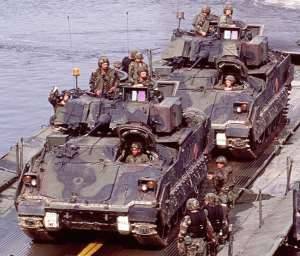Photo: Boeing
Dec 28, 2011 By David Eshel - defense technology international
Tel Aviv - Regional threats to stability, growing tension over the exploitation of natural resources in economic exclusion zones (EEZ), the impact of piracy and terrorism, and criminal activities in the littorals are among factors driving demand for advanced airborne maritime surveillance assets.
Maritime surveillance is one of the fastest-growing defense markets, with countries seeking a range of technologies to improve their ability to monitor traffic in territorial waters and secure ports and other shore facilities from threats. For naval forces, airborne assets are needed to track and warn of submarine activities and protect disputed territories. Strong and effective surveillance is also a key component in assembling international coalitions for stability operations and in fighting piracy.
Effective and far-reaching maritime monitoring is a priority in the Middle East and Asia-Pacific. In the eastern Mediterranean, deep-sea drilling has yielded major deposits of oil and natural gas off Israel and Cyprus, and shown the importance of defending offshore rigs (DTI November, p. 22). In Asia the dramatic growth of the Chinese navy has increased tension with countries such as India over energy sources and territorial claims, and led to a surge in submarine fleets, and with it demand for maritime patrol and antisubmarine-warfare (ASW) aircraft.
The Lockheed P-3 Orion has compiled a decades-long record of maritime patrol, and is in use with the U.S. Navy and other maritime forces around the world. Modernization programs have kept the iconic aircraft relevant in a rapidly changing world of evolving threats and capabilities. Israel Aerospace Industries (IAI) was awarded two contracts worth $37 million to integrate the EL/M-2022A surveillance radar, developed by IAI and its Elta subsidiary, onto P-3s. The contracts were awarded by two undisclosed militaries that are upgrading their patrol aircraft. The radar sets were tailored to fit in the nose and tail. One forward-looking antenna will provide 240-deg. coverage and two additional antennas will provide 360-deg. coverage.
The EL/M-2022A is an advanced, multimode surveillance system incorporating synthetic aperture radar (SAR) and inverse SAR 3-D technology, as well as expertise gained by missions conducted by the Israeli military. EL/M-2022A can be deployed on maritime aircraft in support of ASW, EEZ patrols, coastal defense, drug smuggling and fisheries patrols, and search-and-rescue missions. The radar’s modular architecture permits integration onto rotary- and fixed-wing aircraft including unmanned aerial vehicles (UAV). It has a high degree of commonality with Elta’s EL/M-2032 fire-control radar. Excluding the operator’s console, EL/M-2022A hardware weighs less than 100 kg (220 lb.).
A patrol aircraft developed by Boeing, the P-8 Poseidon, will replace the U.S. Navy’s remaining P-3Cs. The P-8A is a long-range multi-mission platform. It has an advanced mission system that ensures maximum interoperability in battlespace. According to Boeing, all sensors on board contribute to a single fused tactical situation display, which is shared over military standard and Internet Protocol data links, allowing for seamless delivery of information among U.S. and coalition forces.
After several years of debate, the Navy decided to replace its specialized versions of P-3 reconnaissance aircraft with UAVs by the end of the decade. Northrop Grumman is team leader and prime contractor for the MQ-4C Broad Area Maritime Surveillance (BAMS) UAV. The high-altitude, long-endurance (HALE) platform is based on the Global Hawk, and designed to cruise at 60,000 ft. Unlike Global Hawk, which flies only at high altitude, MQ-4C is required to descend to lower altitude to get a closer view of suspected targets. To fly safely with manned and unmanned aircraft, the MQ-4C will be equipped with sense-and-avoid radar, which alerts an operator to air traffic in its vicinity. The MQ-4C will have 36-hr. endurance and operate at 60,000 ft., avoiding strong winds and severe weather. The payload is 3,200 lb. The UAV will have 2-D advanced, electronically scanned array radar for 360-deg. coverage of vast sections of ocean.
Another UAV for maritime use, Northrop Grumman’s MQ-8B Fire Scout, a vertical-takeoff-and-landing rotorcraft, accommodates a variety of sensors. It was deployed for the first time aboard the USS McInerney.
The P-8A and BAMS programs are in their advanced stages. Last January, Boeing received a $1.6 billion contract for low-rate initial production of the first six aircraft. Initial operational capability is slated for 2013. In 2008, the Navy awarded Northrop Grumman a $1.16 billion System Development and Demonstration contract for BAMS.
The P-8A/MQ-4C duo already provides a role model for Asia-Pacific nations that are challenged with covering vast ocean areas from shore bases. The Royal Australian Air Force, currently operating 18 Lockheed AP-3Cs, has expressed interest in the P-8A and its HALE component. As part of Project Air 7000 Phase 1, Canberra is expected to buy eight P-8As to replace its 18 AP-3Cs. The P-8A aircraft will be augmented by seven UAVs to fulfill the remaining roles. Australia completed the last upgrade of its AP-3Cs in 2005, which included the installation of an Elta’s EL/M-2022(V)3 maritime surveillance radar and a FLIR Systems Star Safire II thermal imager.
Israel is investing in its maritime surveillance and reconnaissance capabilities to protect new finds in offshore oil and gas deposits, which have become a security priority for coming years. One segment that will likely get much attention is enhancing unmanned maritime surveillance in the eastern Mediterranean, to guard the gas and oil drilling platforms being moved within Israel’s vulnerable EEZ and in other areas.
Eli Gambash, marketing manager for IAI’s Malat division, says the company’s Heron-1 and Heron-TP UAVs, equipped with the new EL/M-2022 inverse SAR and automatic identification system, are ideal for maritime surveillance, coastal protection and antipiracy missions. The Heron-TP has also been tested with SAR for maritime surveillance, with the antenna stored in a belly fairing. “The Heron-1 with Elta radar covers a 400-nm. radius and identifies objects amid the clutter of the sea with enormous precision,” says Gambash, a captain in Israel’s naval reserve. “With the Heron you can remain in a certain place, completely passive, yet be in full situational control.”
India is rapidly expanding maritime surveillance, targeting and ASW capabilities with acquisitions of advanced systems. The country is a pioneer in the use of unmanned systems for surveillance. Its navy has been operating Israeli Searcher II and Heron I UAVs for years—Searchers carry EL/M-2022U lightweight maritime surveillance radar, and Herons are equipped with a suite of sensors, including radar, electro-optic payloads, sigint, comint and electronic support measures sensors, and line-of-sight or satellite data links. Israel is believed to have offered the newer Heron-TP to India to augment current UAVs.
India is also embarking on two maritime patrol programs to upgrade the littoral surveillance capabilities of the navy and coast guard. New Delhi is evaluating a potential buy of six aircraft, as part of the navy’s Medium-Range Maritime Reconnaissance program. These aircraft would cover 500 nm., flying 6 hr. on station, and replace the navy’s Dornier Do-228 aircraft, currently used for littoral surveillance.
A similar platform is being considered to replace the coast guard’s Britten-Norman BN-2B Islanders.
A third program in the planning stage seeks nine amphibious aircraft for surveillance over territorial waters in the Andaman Sea. The platforms likely to meet the requirement are the CASA/IPTN CN235MP—produced and supported in Indonesia—and the Saab 2000 MPA. The latter will be offered with advanced AESA radar from Selex, addressing what Saab considers a new Indian requirement. The plane will be fitted to carry RBS-15 antiship missiles, manufactured by Saab Bofors Dynamics. Optional weapons include the Boeing Harpoon missiles India is buying for the P-8I, the Indian version of the P-8A aircraft.
































